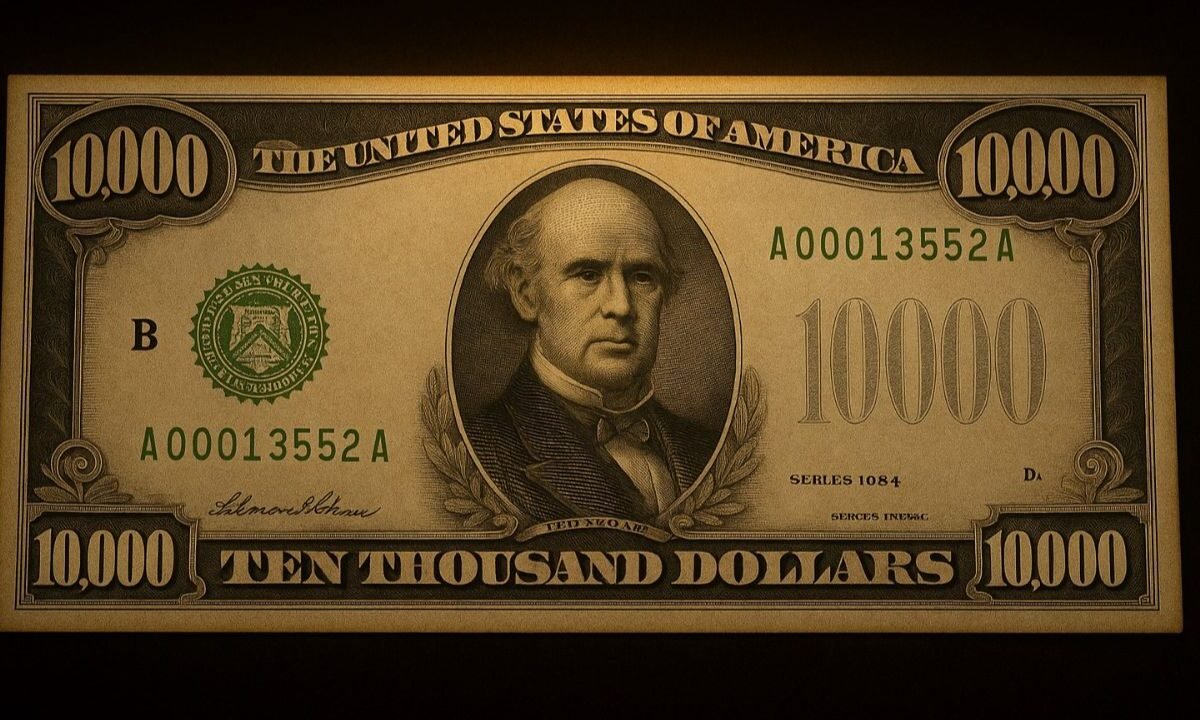The 1934 $10,000 bill stands as one of the most iconic and rare pieces of U.S. currency.
Issued during the Great Depression, this high-denomination note was primarily used for large financial transactions between banks.
Today, it holds immense historical value and is a prized collector’s item.
Historical Context And Purpose
Introduced in 1934, the $10,000 bill was part of the Federal Reserve Note series.
Its primary function was to facilitate large-scale transactions between banks, rather than for general public use.
The note featured a portrait of Salmon P. Chase, who served as the U.S. Secretary of the Treasury during the Civil War.
Design Features
1. Obverse (Front)
- Portrait: Salmon P. Chase
- Text: “The United States of America” and “Will Pay to the Bearer on Demand Ten Thousand Dollars”
- Seal: Green Treasury Seal
- Signatures: Treasurer of the United States and Secretary of the Treasury
2. Reverse (Back)
- Design: Simple green border with the denomination “10,000” prominently displayed
- Text: “The United States of America” and “Ten Thousand Dollars”
Rarity And Collectibility
The discontinuation of high-denomination bills in 1969, combined with their limited circulation, makes the 1934 $10,000 bill extremely rare.
Collectors highly value these notes, particularly those in uncirculated condition.
Exceptional examples can fetch hundreds of thousands of dollars in private sales and auctions.
Value And Market Trends
The value of a 1934 $10,000 bill depends on its condition, serial number, and historical significance.
Notes with unique serial numbers, special Federal Reserve district identifiers, or uncirculated condition are especially prized by collectors.
Market trends indicate that well-preserved notes consistently achieve six-figure sums.
Key Information At A Glance
| Feature | Details |
|---|---|
| Series Year | 1934 |
| Portrait | Salmon P. Chase |
| Primary Use | Bank-to-bank large transactions |
| Seal Color | Green |
| Discontinued | 1969 |
| Collectible Value | Can exceed $100,000 depending on condition and rarity |
The 1934 $10,000 bill is more than just currency; it is a piece of American history. Its design, purpose, and rarity make it a legendary collectible.
For historians and collectors alike, this bill offers a glimpse into the financial landscape of the 1930s and the evolution of U.S. currency.
FAQs
Why was the $10,000 bill discontinued?
The U.S. government discontinued high-denomination bills in 1969 to prevent money laundering and other illicit financial activities.
Are 1934 $10,000 bills still legal tender?
Yes, they remain legal tender; however, their collector value far exceeds their face value.
How can I determine the value of my 1934 $10,000 bill?
A professional currency appraiser or auction evaluation can provide an accurate estimate based on condition, rarity, and serial number.

